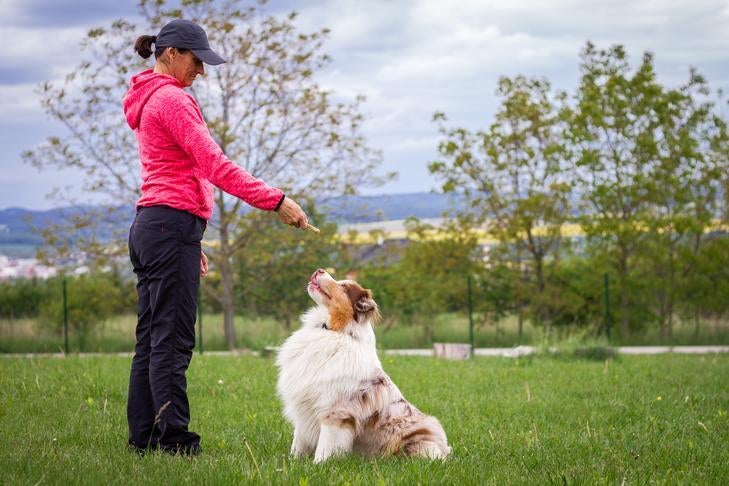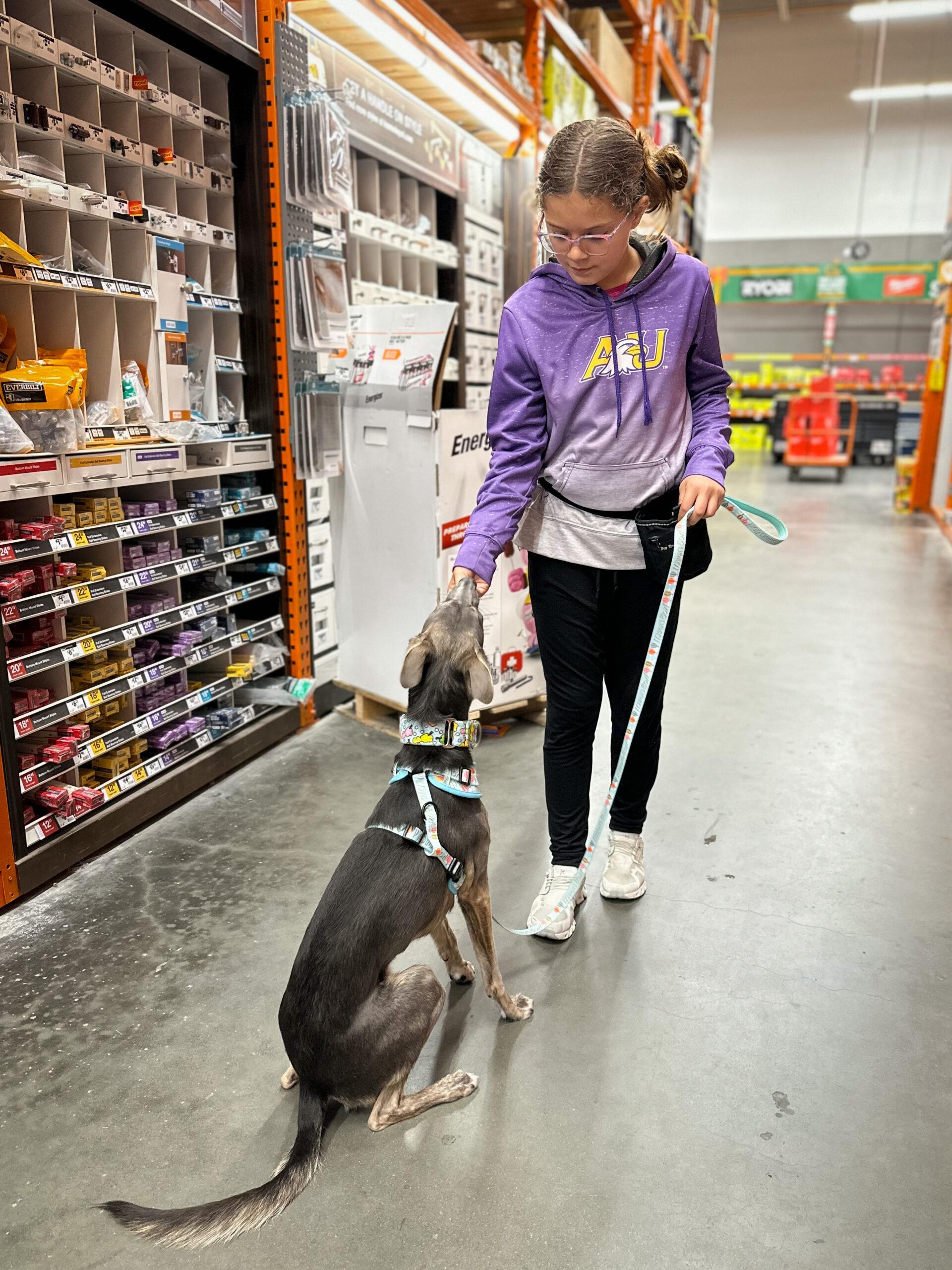Recognizing Dog Body Language Throughout Dog Training
Recognizing Dog Body Language Throughout Dog Training
Blog Article
Vital Tips for Successful Dog Training: A Guide for Animal Owners
Effective canine training is a diverse procedure that calls for a tactical strategy tailored to both the pet dog's character and the proprietor's goals. Comprehending exactly how to navigate these challenges can considerably boost the training experience, inevitably changing the partnership in between proprietor and pet dog.
Comprehending Dog Behavior
Understanding canine habits is vital for effective training and fostering a harmonious connection between pooches and their proprietors. Dogs interact mainly with body movement, vocalizations, and activities, making it critical for proprietors to translate these signals properly. Identifying a pet dog's pose, tail placement, and ear alignment can give understandings into its mood. For example, a wagging tail does not constantly suggest happiness; it can also signal exhilaration or anxiousness.

Socialization plays a substantial function in pet actions; exposure to various atmospheres, people, and other animals can considerably impact a dog's personality. Factors such as type characteristics and private character ought to assist training approaches, as some types might have details behavioral attributes that necessitate tailored methods. By understanding these components, proprietors can produce a helpful setting that motivates favorable actions, leading to effective training end results and a much deeper bond with their pet dogs.
Developing Consistent Commands
Efficient interaction with your pet dog begins with establishing constant commands. This foundational element of training is crucial for promoting understanding in between you and your pet. Consistency in the commands you utilize makes certain that your canine can reliably connect certain words or expressions with the wanted behaviors.
When picking commands, select clear, distinct words that are easy to claim and distinguish from each other. Stay clear of using similar-sounding commands that might puzzle your canine. Making use of "rest" and "stay" is ideal, however "sit" and "struck" can lead to misconceptions.
Additionally, preserve the same tone and quantity for every command. Canines are delicate to singing cues, so differing your tone can produce confusion.
It is equally vital to ensure that all member of the family get on the exact same page concerning the commands utilized. A united front in command usage will protect against blended signals and strengthen the learning procedure.
Positive Reinforcement Methods
The power of favorable reinforcement in dog training depends on its capability to encourage preferred habits through rewards and appreciation. This strategy is based in the concept that actions adhered to by favorable results are more probable to be duplicated. By incorporating favorable reinforcement into your training regimen, you can successfully shape your dog's actions in a constructive way.
To apply favorable support, it's vital to identify what inspires your dog, whether it be treats, playthings, or verbal appreciation. When your canine carries out a preferred action, such as resting on command, immediately compensate them with a treat or love. This association in between the command and the positive end result reinforces their understanding.
It's critical to timing the rewards properly; delivering the support within secs of the desired actions aids your canine make the link (dog training). Additionally, uniformity is key-- guarantee that all member of the family utilize the exact same commands and reward systems to prevent confusion

Slowly, you can lower the regularity of treats as your canine discovers the behavior, transitioning to applaud or periodic benefits. This approach not only fosters a solid bond in between you and your canine however likewise advertises a favorable learning atmosphere, making educating a delightful experience for both.
Socialization and Interaction
Consistently exposing your pet to a variety of settings, individuals, and various other pets is important for their social development. Socializing must start early, ideally during the crucial window of 3 to 14 weeks, when puppies are most responsive to new experiences. Nevertheless, older dogs can additionally benefit from continuous socialization efforts.
Present your pet to various settings, such as parks, pet-friendly shops, and metropolitan areas. This exposure assists them adapt to numerous stimuli, lowering stress and anxiety and anxiety reactions. Encourage positive interactions with other pet dogs and people, guaranteeing that these experiences are regulated and secure to foster confidence.
Utilize structured playdates with well-mannered pet dogs, here are the findings as this can improve your pet's social skills and show them proper habits. Obedience classes and training sessions also supply excellent chances for socialization, enabling your canine to communicate with others in a supervised environment.
Monitor your canine's body movement throughout communications, as this will aid you determine their convenience level. Gradually boost exposure to even more tough scenarios while ensuring that each experience declares. A well-socialized canine is most likely to exhibit balanced behavior, making them a delight to have in any type of setup.
Resolving Typical Training Difficulties
Every pet proprietor will certainly run into training obstacles at some time, no matter their pet dog's age or socialization degree. Recognizing usual issues such as stubbornness, disturbances, and terror can assist in developing reliable strategies for improvement.
Disturbances during training sessions can thwart focus. To combat this, start training in a peaceful setting with very little stimulations. Progressively present distractions as the dog comes to be extra competent in commands. Short, constant training sessions are likewise efficient in keeping interest.
Fearfulness can prevent a pet dog's knowing process. Gradual desensitization to the resource of fear, coupled with favorable reinforcement, can help relieve anxiousness. Patience is important; never ever require a canine into a situation that creates distress, as this may worsen the issue.
Eventually, understanding and addressing these typical challenges with an organized method will cultivate a much more efficient training experience, enhancing the bond between pet dog and proprietor while advertising reliable learning.
Conclusion
In recap, successful pet dog training relies upon an extensive understanding of canine actions, the establishment of constant commands, and the application of positive reinforcement techniques. Socializing plays an essential function in developing well-adjusted pet dogs, while resolving usual training obstacles requires perseverance and adaptability. By applying check here these crucial techniques, pet dog owners can foster a strong bond with their pet dogs and promote desirable behaviors, eventually bring about a harmonious connection in between people and their canine companions.
Comprehending pet dog habits is essential for reliable training and cultivating a harmonious relationship in between dogs and their owners.Socializing plays a considerable function in dog behavior; exposure to various settings, people, and various other pets can significantly influence a canine's personality.The power of positive support in pet training lies in its ability to encourage preferred actions with benefits and appreciation. By including favorable support right into your training regimen, you can properly shape your canine's actions in a useful manner.
In recap, successful canine training counts on a comprehensive understanding of canine habits, the facility over here of constant commands, and the application of favorable support techniques.
Report this page